Stress Definition PhysicsStress is a physical term describing the force applied to a material per square inch. Stress is the physical science and engineering word for force per unit area within the material and is a result of externally applied forces. The breaking stress, commonly called the ultimate tensile stress, is the maximum force a material can withstand before breaking. 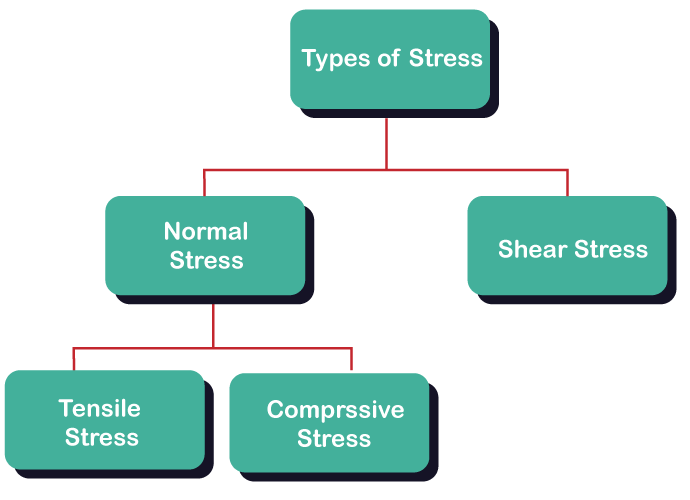
Tension is what causes a substance to be tensile. The material is being stretched by the forces operating on it. An internal restoring force is produced when the elastic bodies take on their original form. We will refer to this restoring force as stress if we attempt to calculate how much it applies per unit area on the deformed body. Compression occurs when external forces squeeze a body. The formula below is used to determine the stress: 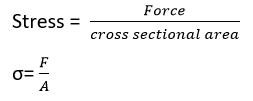
where, σ= stress F = Newton force (N) A=cross-sectional area in m² N/m² or Pascals are units of stress (Pa) Different Kinds of Stress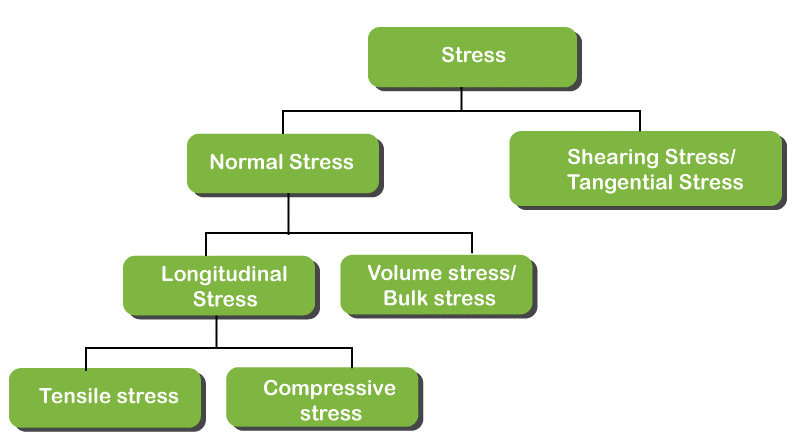
There are several different kinds of stress in physics; however, they are primarily divided into three types:
1. Normal Stress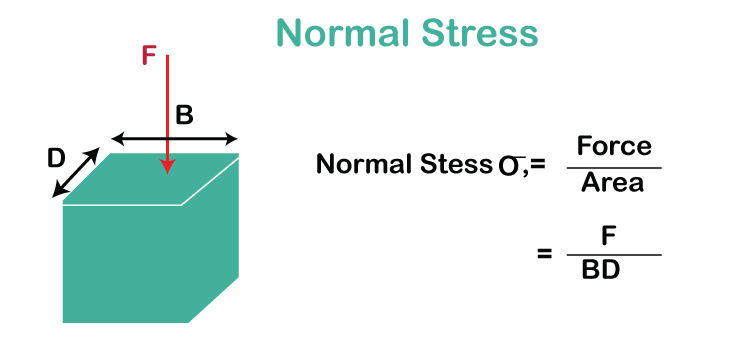
The term "normal force" refers to the stress that develops when an axial force loads a part. In other words, the body is perpendicular to the tension when it is applied. The stress level will remain normal if an object's body volume or length changes. It is a representation of the character. The normal stress unit in SI is MPa. The Normal stress is calculated using the formula below: 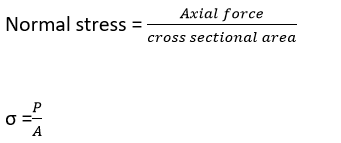
Normal stress will develop when an item is placed under tension or compression. 2. Longitudinal StressLongitudinal stress is the term used to describe when regular stress causes changes in body length. 
There are two brief categories that longitudinal stress may be further broken down into. Newton's third rule of motion states that tensile tension may be seen when a rod is stretched. The stretching of a rubber band frequently shows tensile tension. Compression is the opposite of tension. They are under its influence when opposing or equal pressures push the rod's ends. If you've ever applied compressive stress on a rubber ball in your hands, you were doing it. Bulk stress or volume stressWhen the body's volume changes due to stress, it is said to be under volume stress. Normal stress on a body results in changes to its length or volume, while tangential stress, also known as volume stress, changes the body's form. A body must overcome a force perpendicular to the surface under pressure (p) submerged in a liquid. Bulk stress 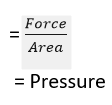
4. Shearing stress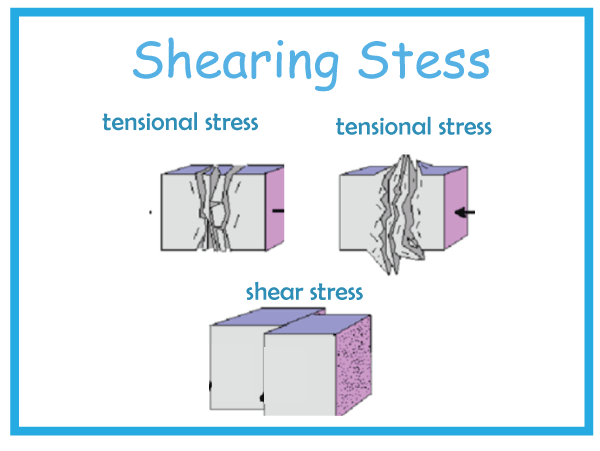
A force applied tangentially over the plane's surface area results in shearing stress. The forces acting on the surface are parallel when the stresses on the surface form a tangent. This kind of tension is referred to as shearing stress. Shearing stress 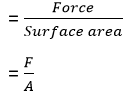
5. Tangential StressForce per unit area is how tensile tension is described. Applying tension will cause the force to lengthen the body. According to the third law of motion, tensile tension is seen when a rod is stretched. A typical illustration of tensile tension is rubber. It is the quantity connected to stretching. It is indicated by ?. 6. Compression StressA tangential force acting on a body causes changes to its shape and volume. The length of the body decreases once the compression load is applied. The opposite of compression stress is tensile stress. If you've ever compressed a squeaky toy for a pet in your hand, you know how stressful it is for the body. 7. Tangential StressNormal stress and tangential stress are both given as force per unit area. The relative displacement between two opposing sides of a body results from applying two equal and opposite deforming forces parallel to the cross-sectional area of the object. The restoring force produced by the tangential force applied per unit area is called tangential stress. 8. Hydraulic Stress
9. Radical StressThe radial stress on the inner surface of a cylinder with thick walls is equal to and opposite to the gauge pressure, whereas it zeroes out on the outer surface. Because circumferential and longitudinal stresses are greater than radial stress, radial stress is neglected. A physical quantity called stress characterizes the internal force. Stress is the force across a "small" border per unit area of that border?stress (energy), like velocity, torque, and other fundamental variables. You may wonder what scenarios are stress-worthy and which are not. You've probably noticed that some materials, like rubber, are quite flexible. We can also describe it when any material is subjected to a stretching force (Tensile Force). That will expand. An easy object to stretch is a rubber band. A rubber component is subjected to the tensile force. But can you stretch a rod of iron? The iron rod is not subjected to tensile force; hence the answer is no. Uses of the Stress Concept in Real LifeEvery day, professions like mechanical engineering and architecture use the idea of stress. These are a few general examples of how stress is used: In architecture, stress is utilized to develop a building's structural layout. The concept of stress and how it impacts the various parts of the building is included in every aspect of the structure, including its foundation, support beams, and columns. Mechanical engineering and industries like robotics also make extensive use of stress. It's critical to comprehend how different mechanical components might put one another under stress to prevent mishaps. ConclusionStress is a physical term that measures the force applied to a material per square inch. It can be divided into normal, longitudinal, and volume stress. It is calculated using the formula F/A and used in mechanical engineering and architecture professions to develop structural layouts and prevent accidents. FAQQuestion 1: In physics, what is the definition of stress? Answer: In the physical sciences and engineering, stress is referred to as a force per unit area that develops within a material as a result of externally applied forces, uneven heating, or persistent deformation. Stress accurately describes and predicts elastic, plastic, and fluid behavior. Question 2: What role does stress play in physics? Answer: Stress is the term used in physics to describe the force applied to a material's unit area. The term "strain" refers to a body's response to stress. The body may change shape as a result of stress. The force a substance has experienced may be measured using stress units.
Next TopicSymmetry Definition
|
 For Videos Join Our Youtube Channel: Join Now
For Videos Join Our Youtube Channel: Join Now
Feedback
- Send your Feedback to [email protected]
Help Others, Please Share









